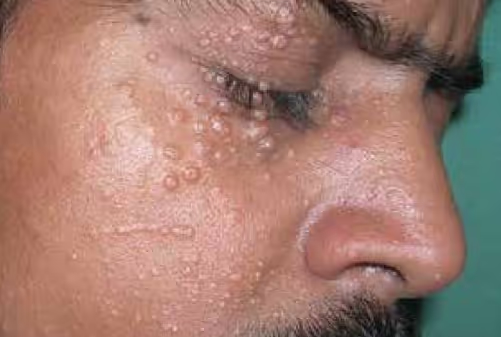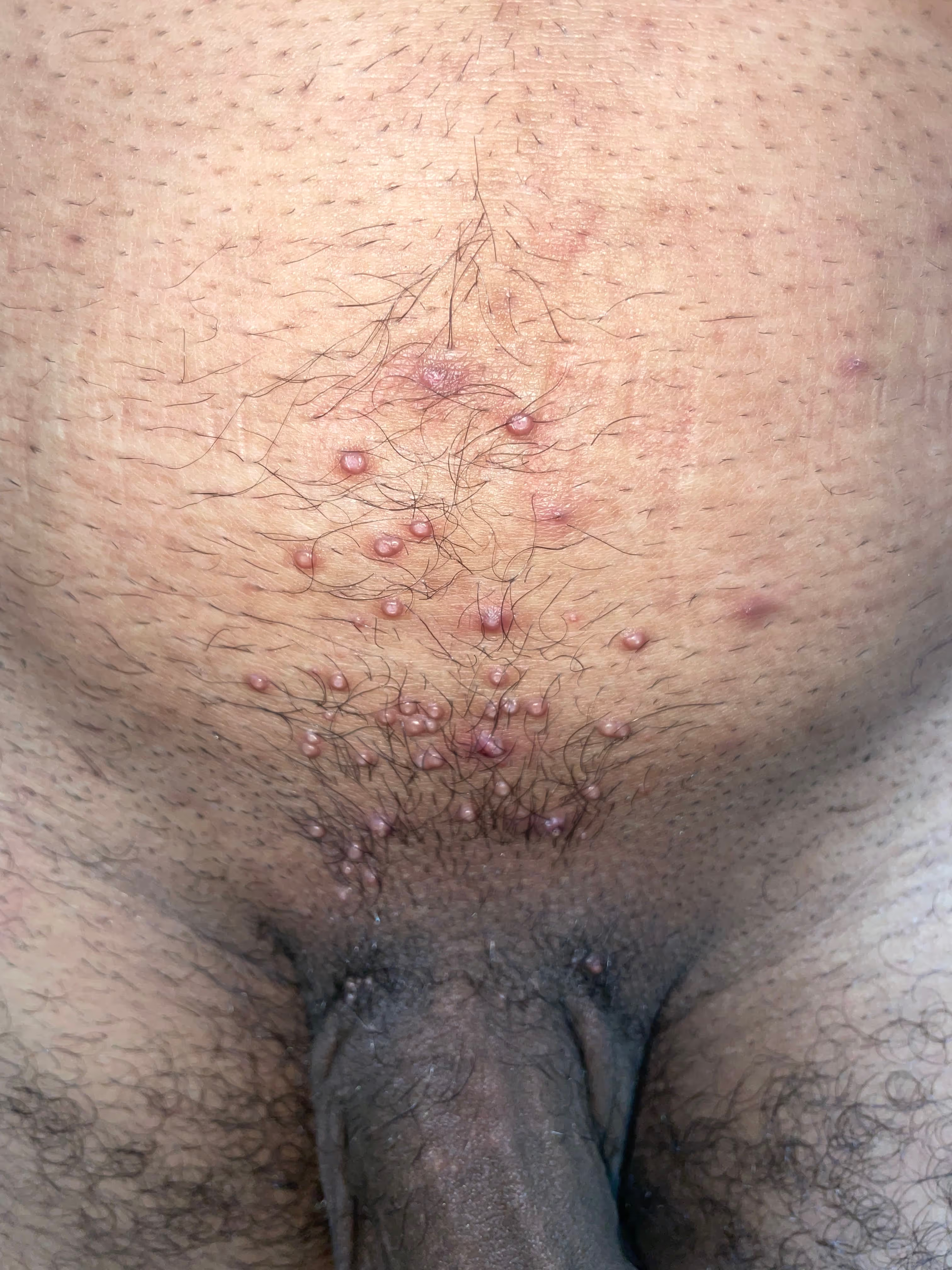Molluscum contagiosum is a common viral skin infection caused by Molluscum contagiosum virus (MCV).
It is more common in children compared to adults.

Molluscum contagiosum infection indicates impaired immunity against the pox virus.
Children are more prone since their immune system does not handle the virus too well. The child is otherwise healthy. In adults with multiple Molluscum contagiosum lesions or with lesions in and around genitalia, there may be evidence of decreased immune status such as HIV infection.
Molluscum contagiosum spreads readily by skin contact or by sharing of clothes and towels. Scratching or itching can allow the virus to spread to other body parts.
In children, infection is often acquired in schools or swimming pools where sharing of towels occur. Children living in hot humid areas with poor hygienic conditions are more likely to acquire molluscum contagiosum.
Sexual transmission can also occur (especially in Molluscum in and around genitalia).

The lesions of Molluscum contagiosum are seen as discrete, skin-coloured or pearly white raised small bumps anywhere on the skin. They appear few weeks after being exposed to the virus.
These are commonly seen on the face, may occasionally be present on the trunk and limbs. In sexually active adults, lesions are seen on the genitals or extragenital areas such as thighs or it may be seen as multiple, confluent lesions in immunosuppressed patients.
Consult a dermatologist since it can be easily diagnosed by the dermatologist by the clinical appearance of the lesion.
A dermatologist can easily confirm the diagnosis based on the appearance of skin lesions. No laboratory tests are usually needed for diagnosis.
Rarely, when the diagnosis is less certain, the doctor may scrape the skin tissue or do a biopsy and examine them under a microscope to demonstrate the molluscum bodies/ inclusion bodies.
In sexually active adolescent and adults, screening for coexisting sexually transmitted disease including HIV must be done.
MC eventually shed when the immunity overpowers the virus. It can resolve spontaneously. But this may take months to years. In the meantime, multiplying lesions are a source of anxiety to parents.
Children are offered therapy that is not too intimidating.
Options include application of potassium hydroxide, cantharidine application (not easily available), gentle application of liquid nitrogen, topical retinoids and imiquimod. Extraction with a curette may be performed. Pricking the lesions with sterile needle followed by expression of the cheesy material with fine forceps can be done by the dermatologist. Cryotherapy, and electrodessication maybe helpful.
Your dermatologist will guide you to the most appropriate option depending on the situation.
Many of the treatments require multiple sittings and repeat examination at 2-4 week intervals may be needed.
No oral antiviral medicines are effective for molluscum. Oral medicines to improve the immune response against pox virus maybe helpful.

Recurrence can occur based on the immune status of the individual to pox virus. If the lesions are not removed totally, auto-inoculation can cause recurrence.
A child with Molluscum can attend to school and do all routine activities. The condition is not highly contagious like chicken pox infection and does not require isolation.
Disclaimer: This article is only for general patient information and is not intended for self medication. There is no legal liability of IADVL arising out of any adverse consequence to the patient. Subsequent to its use for self treatment of the disease images adjust for the depiction of the condition and is not to be used for any other purpose.
Explore articles in this section to gain a deeper understanding of various skin diseases and conditions. Each article provides detailed information on symptoms, causes, and treatment options, helping you to manage and address these dermatological issues effectively.

Psoriasis is a skin condition where new skin forms at a faster rate, showing up as red rashes with whitish scales, commonly over elbows, knees, and other body parts.

Dandruff is a common scalp condition in which small pieces of dry skin flake off from the scalp and is usually associated with itching. The exact cause of Dandruff and Seborrhoeic Dermatitis is unknown.

Dermatophyte infection is a superficial fungal infection of skin, hair and nails. It is also known as ringworm. In Hindi it is termed as Daad and in Marathi it is termed as Gachkaran.